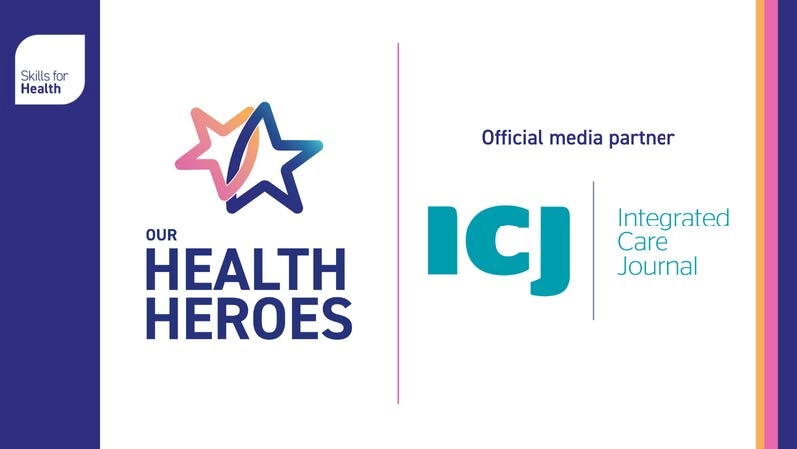Bridging the Gap: Connecting people with the stairlift grants they need

Thousands may be missing out on stairlift grants worth up to £36,000. A new guide explains the eligibility criteria for accessing a grant, and how to apply.
Installing a stairlift into a property can provide residents with improved mobility, allowing people to continue to enjoy their independence as their mobility decreases.
The price to purchase and fit this equipment can put some people off investing in these mobility solutions though. According to a Which? survey of stairlift owners, the average sum that a respondent paid for a new stairlift as of December 2022 was £3,867.
Curved stairlifts provider Access BDD has created a guide, advising how to bring down the cost of these home modifications, by explaining who is eligible for any of these stairlift grants.
Disabled Facilities Grants
A Disabled Facilities Grant (DFG) is a source of financial aid that is available to disabled people across England, Wales and Northern Ireland when they need to make home adaptations so that a property can become more accessible.
Current uptake
The House of Commons Library’s Disabled Facilities Grants (DFGs) For Home Adaptations document has shed some light into how many people have been helped by this form of financial aid.
Although it has been voluntary since 2010 for local authorities to submit annual returns to the Department for Levelling Up, Housing and Communities about their DFG activity, a parliamentary question posed to the Minister, Luke Hall, in February 2020 found that the estimated number of DFGs delivered increased from 40,645 in 2014/15 to 53,500 in 2018/19.
What financial aid is there?
Here’s how much applicants can apply for when it comes to receiving a DFG:
- In England, a grant of up to £30,000
- In Wales, a grant of up to £36,000
- In Northern Ireland, a grant of up to £25,000
Applicants may receive more than these amounts from some councils, though how much you get will usually be determined by your household income and having household savings that are above £6,000.
Take note too of the following caveats when it comes to applying for a DFG:
- Disabled children under the age of 18 are eligible for a DFG without their parents’ income being factored into the decision.
- A landlord will not have their income or savings considered if they apply for a DFG to make adaptations to a property they own. If the current tenant moves out within five years of this financial aid being received though, a council may request that another disabled person moves into the property.
Who is elible?
Anyone looking to join the thousands of people who have successfully applied for a DFG will be eligible for this financial aid if someone in their household has a disability.
This individual must also intend to live in the property throughout the grant period, which is usually set at five years but may be adjusted for circumstances such as someone being terminally ill.
The council which provides the DFG must be satisfied that any work carried out is necessary and appropriate for the needs of the disabled individual too, as well as being able to be done on the property depending on its age and condition.
Once a DFG has been approved, all work should be completed within a year. However, do not start this work before the council states the application is approved – a grant can be turned down by the council in this type of scenario.
How to apply
Applicants can apply for a DFG through their local council by clicking here. A decision must be provided by councils within six months of the application being submitted.
Scotland: Scheme of Assistance
Scotland is not included in the section on DFGs. This is because local authorities across this country are responsible for providing its citizens with stairlift grants through what is referred to as the Scheme of Assistance.
According to the Scottish Government’s Housing Statistics 2022 and 2023 publication, a total of 6,353 Scheme of Assistance grants were paid to householders during the 2022/23 period. This is up by four per cent when compared to how many of these grants were delivered in 2021/22.
Financial help in the form of grants or loans can be provided through the Scheme of Assistance, so that private housing can be adapted because one of its occupants is disabled.
Grants must be at a minimum level of 80 per cent of the eligible cost, though recipients might get 100 per cent if you receive one of these benefits:
- Income-based Jobseeker’s Allowance
- Income-related Employment and Support Allowance
- Income Support
- The guarantee credit part of Pension Credit
- Universal Credit
It is to the discretion of a local authority to pay a grant that is more than 80 per cent of the eligible cost to a person who is not legally entitled to 100 per cent though. Circumstances which lead to this decision will be set out by the local authority in its Scheme of Assistance statement.
Eligibility in Scotland
Local authorities throughout Scotland must provide help in the following situations:
- A property needs to be adapted so that it becomes suitable for a disabled person to occupy it. When these home adaptations will assist an individual to gain access to standard amenities, this financial aid must come in the form of a grant.
- To reinstate a property that has been adapted previously.
- When an owner of a property has been served a work order or statutory order.
It is also within the law that any help provided through the Scheme of Assistance must not discriminate against an individual in any of these ways:
- A cognitive impairment
- A physical impairment
- Gender reassignment
- Pregnancy or maternity
- Their age
- Their race
- Their religion or belief
- Their sex
- Their sexual orientation
Anyone can apply for financial help through the Scheme of Assistance by filling in an application form. These will be available for download from local authority websites or in physical format at local housing officers, with local Citizens Advice Bureau advisers available to answer any questions while applying through this link.
RABI Independent Living Grants and SSAFA Help With Mobility
Specific stairlift grants may also be available to applicants depending on the type of industry they have worked in.
The Royal Agricultural Benevolent Institution (RABI) Independent Living Grants for farming families and the Soldiers’, Sailors’, and Airmen’s Families Association (SSAFA) Help With Mobility for those who have served in the Armed Forces are just two examples to take note of.
RABI states on its website that it awards an estimated £3 million of direct financial support annually, while SSAFA’s Annual Report and Accounts for 2023 detailed that it provided support to over 53,000 individuals through its services in 2023 alone.
Both RABI and SSAFA can assist individuals across the UK with adapting their properties to make a home more accessible. This is how you can be eligible for a stairlift grant through either of these charities:
- RABI Independent Living Grants are available to support low-income farming families in the UK, as well as possibly those in the farming industry when there is a financial crisis.
- SSAFA Help With Mobility services are available to any individual who has received a minimum of one day’s pay from the British Army, Royal Air Force, Royal Navy or Royal Marines, which includes the Reserves. Immediate family of a person who has served for these Armed Forces are also eligible to receive these services.
How to apply
To find out more about the financial assistance available through RABI Independent Living Grants, contact the charity’s support team on 0800 188 4444 to start an application.
To begin applying for SSAFA Help With Mobility, get in touch with one of the charity’s advisors via their Forcesline service.
Whether it is through a government source or a charity, there is plenty of help available when looking to achieve enhanced mobility around a property.











